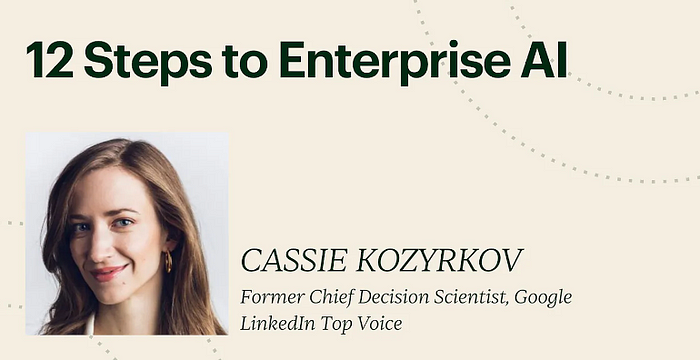How To Hack Yourself
How to deal with tricky questions
Interview-jutsu secrets from public relations experts
When I started getting serious about leveling up my tech public speaking skills, I made the effort to get to know pro speakers of every stripe, from Broadway actors to TED fellows to press directors. Among the most fascinating were public relations experts whose work involves battling hostile reporters on the daily. Here are their secrets…
(This is a follow-up to my public speaking 101 guide, which might be a better place to start if you’re a newcomer to the stage.)
If you step into the spotlight, expect to be put on the spot with questions, so you’ll need advanced tools for getting out of awkward questions gracefully.
If you step into the spotlight, expect to be put on the spot with questions.
Lesson 1: It’s okay to keep information to yourself.
Let’s imagine you just got asked a personal/flammable question in public. It’s the end of the world!!!
I get it.
School might have trained you to see someone’s inability to come up with a complete answer as a sign of lesser competence/intelligence. As a scientist, I’ve spent a long time in that environment and my instinct is to answer all questions directly and clearly, displaying the entire contents of my skull. If I know the answer, I want to give it. Unfortunately, it’s easy to feel under attack during public Q&A sessions if you’re usually an open book.
Answering with falsehood is not okay, but answering with nothing *is* okay. That’s called privacy.
Talking to morally upright PR folk about this one can be therapeutic, because their take is both obvious-in-hindsight and refreshing: “Answering with falsehood is not okay, but answering with nothing is okay. That’s called privacy. It’s okay to keep some information to yourself. Not every question asked by strangers should be fair game. If a stranger asks you about your romantic life, for example, you don’t owe them an answer.”
Scroll to Lesson 4 to find out how to pull off the art of the dodge with grace.
Lesson 2: Everyone has something to hide.
“Ask me anything, I have nothing to hide.” Ah, the famous last words…
If you think you have nothing to hide, why do you close the door when you use the bathroom? Just because we needn’t be ashamed of certain things (perhaps because everyone else does them too) doesn’t mean it serves us well to broadcast them to the world. That’s why it’s important for public speakers to develop the skills to protect their privacy if they’re put on the spot.
Lesson 3: The more interesting you are, the more careful you need to be.
Most of the time, questions hurled at you are well-meaning and any awkwardness you feel comes from not having prepared your answers in advance. Occasionally, however, the attacks are real — you might be cornered on purpose because someone wants to see you mess up.
PR professionals know this all too well, since their job involves battling the public’s thirst for gossip. A story about a famous person or company stumbling in a picturesque way attracts readers like blood attracts sharks.
Putting the entire contents of your skull on display is a luxury you can’t afford once too many people find you interesting.
Taking quotes out of context is part of the game, so folks who deal with press questions are painfully aware of the need to choose their words wisely. Putting the entire contents of your skull on display is a luxury you can’t afford once too many people find you interesting. While most people can get away with quietly perfecting their tan at your local nudist beach, it will become news if a member of a royal family does it. That’s hardly fair, but unfortunately humans have double standards for this sort of thing.
As an aside, a privacy issue that gets thorny is how the actions of not-yet-famous people are being archived and may be dissected very cruelly once a certain level of fame is achieved. Everybody leaks personal information while in public, but it’s hard to predict how it will all be used one day. Here’s an example: How many tourists’ photos are you in the background of while you think no one is watching you? When you’re president, will those tourists sell their shots of your less-than-glamorous fashion moments to the media?
Lesson 4: There’s more than one way to say nothing.
Following up on Lesson 1, once you’ve chosen to answer with nothing instead of falsehood, “no comment” is pretty much the clumsiest way to do it. It’s time to learn the art of the dodge. There are different ways to answer with nothing. Silence is only one of them…
Here are a just few out of many tricks from the bag of dark arts taught in classes on public relations:
- Realize that time is scarce. (“I’d love to be able to go into detail, but a question like this deserves more time than we have for it.”)
- Be vague. (“I don’t want to bore anyone with details here…”)
- Dig your heels into the previous topic. (“Hang on, there’s still a point I’d like to make about the previous topic…”)
- Diffuse it with humor/sass. (“Ooof, now that’s a spicy question. You got me good. The last time someone tried to put me on the spot like that was [humorous something]…”)
- Block-and-bridge (see below).
If you’re part of a panel or in the limelight with other interviewees / speakers, here are two more options:
- Redirect to another speaker. (“Actually, I’m curious what Samira has to say since she’s more of an expert on that than I am…”)
- Play chicken with the moderator. (“I want to tell you a story that will make my answer make more sense. When I was in the circus…”) If you waffle for long enough, the moderator will shut it down and move the conversation, leaving the question unanswered. Just do us all a favor and make the story entertaining if you’re going to play the time wasting game.
Lesson 5: It can be useful to develop selective hearing.
To dodge like a politician, you can practice variants on block-and-bridge, a standard PR jiu-jitsu technique for dodging tricky press questions. It’s the one where you answer the question you want to answer instead of the question you were asked. Perhaps you let on that you understood the original question, perhaps you don’t. Here’s an example with a nonsense question:
Unwanted question: “Don’t you think people should stop eating donuts?”
Classic block: “I’m not an expert on health…”
Block-and-bridge: “Health and nutrition are very important for everyone, and I’m especially passionate about making sure that kids get access to free carrots. If you consider the history of carrot access…”
Oops, I guess I must have misheard your question. (If you keep doing it over and over, you’ll appear a bit addled. In fact, you might sound a bit like a politician — quite a number of them use this technique with a lot more bridge than block.)
Additional inspiration for getting out of an awkward spot:
- “That reminds me …”
- “What this boils down to is …”
- “Before we get off that topic, let me add …”
- “That’s an important point because …”
- “Another way of thinking about this is …”
- “That’s a valid point. But the way I see this is …”
- “That’s interesting, however, …”
- “Well, what’s important to remember is …”
- “That speaks to a bigger point …”
I hope you found these PR pro perspectives useful. Now that you know how to deal with tricky questions, my next article in this public speaking guide series is about how to navigate a variety of the hardest public speaking formats: interviews, AMA (Ask Me Anything) sessions, fireside chats, podcasts, and audience questions after your talk.
Thanks for reading! How about a course?
If you had fun here and you’re looking for an unboring leadership-oriented course designed to delight AI beginners and experts alike, here’s a little something I made for you:

Liked the author? Connect with Cassie Kozyrkov
Let’s be friends! You can find me on Twitter, YouTube, Substack, and LinkedIn. Interested in having me speak at your event? Use this form to get in touch.
